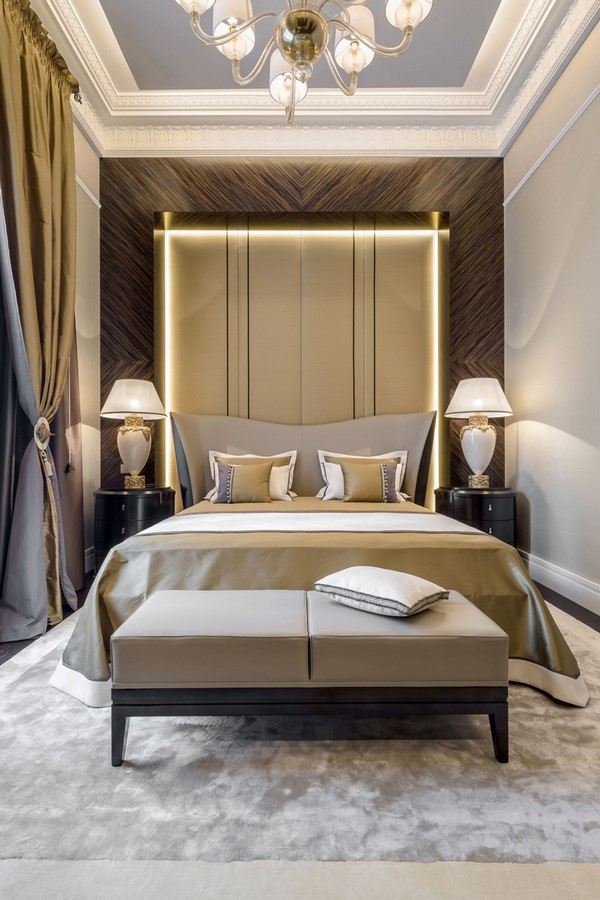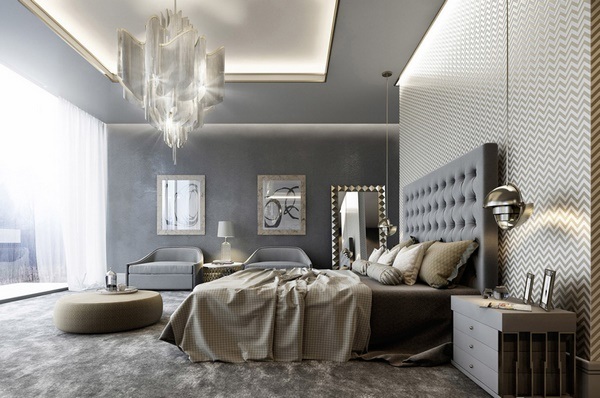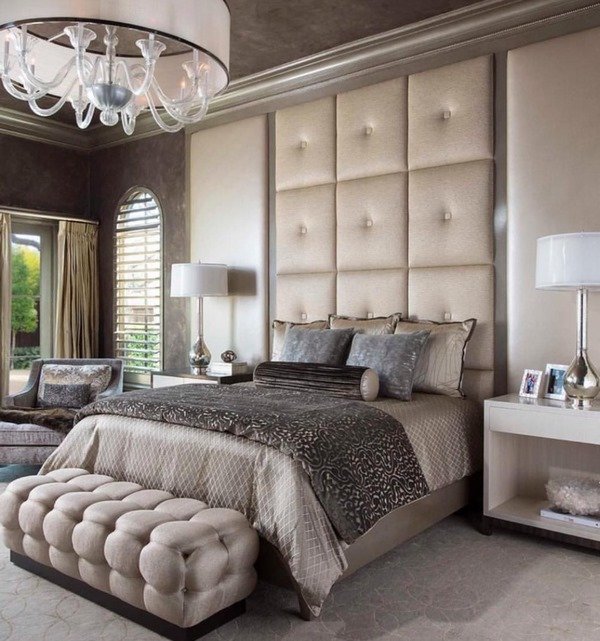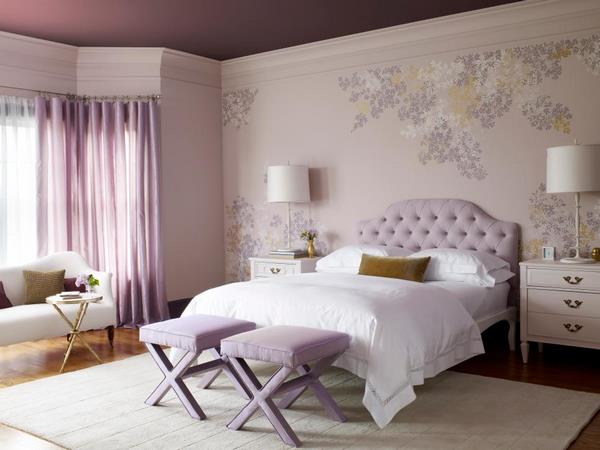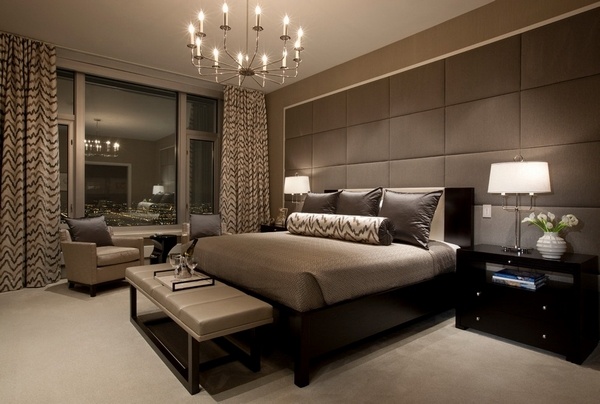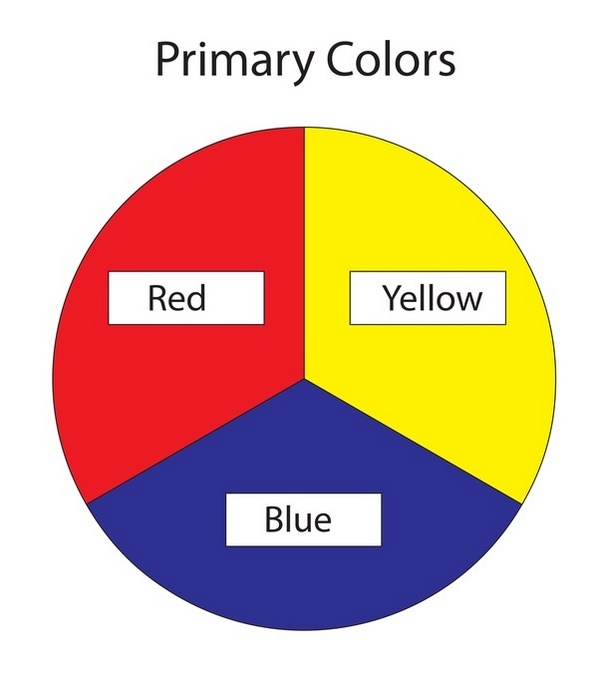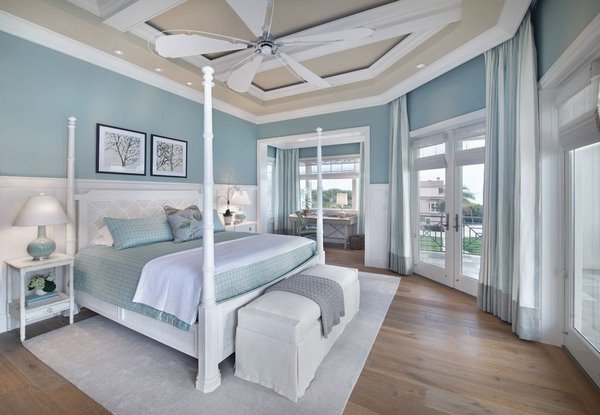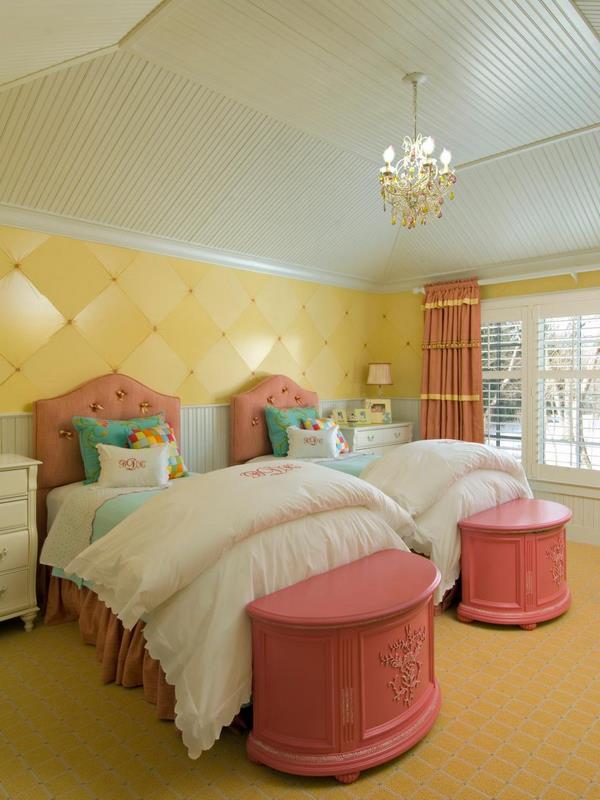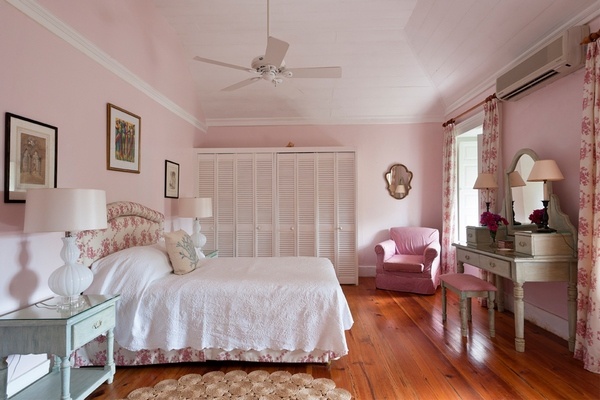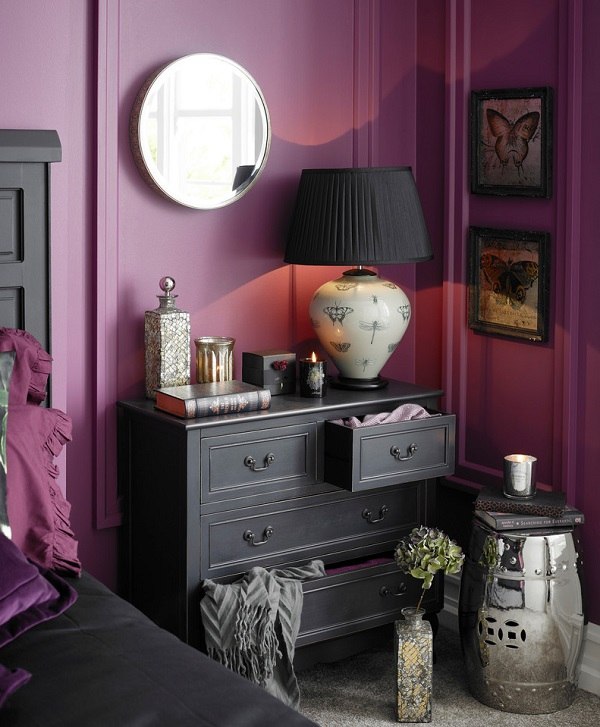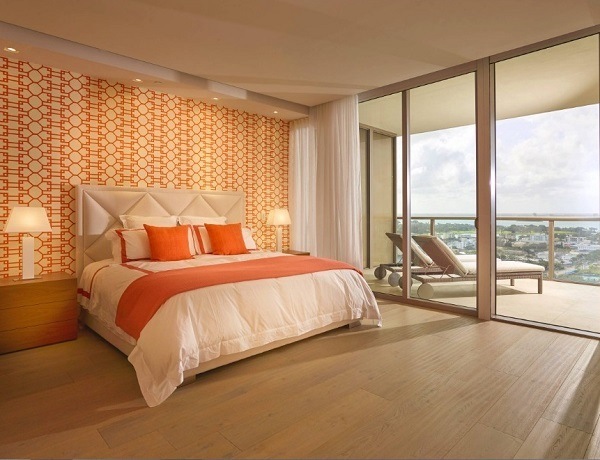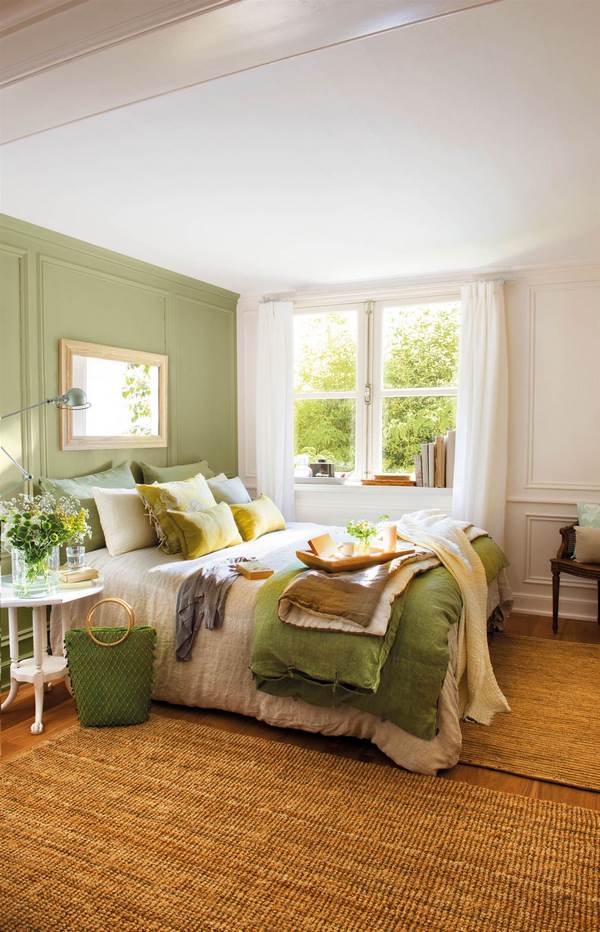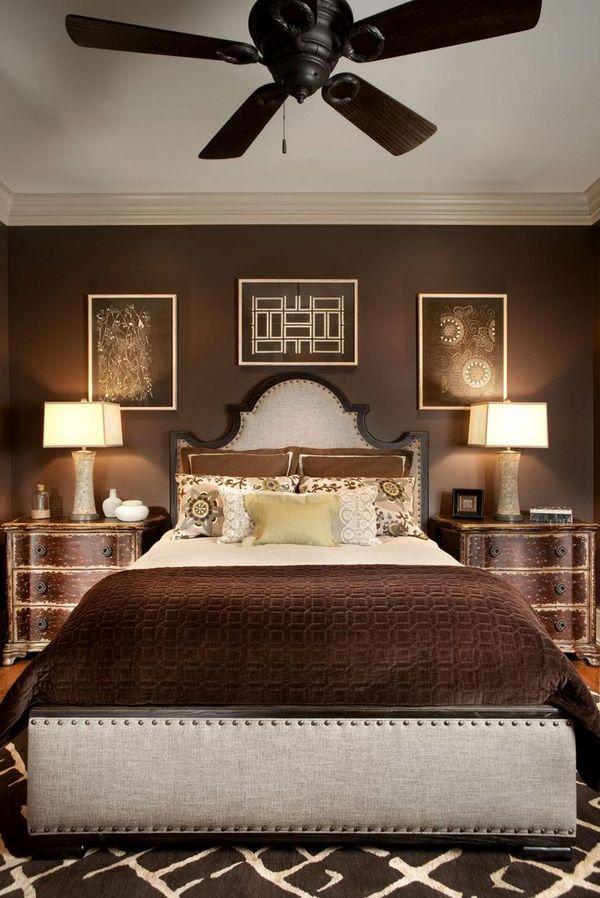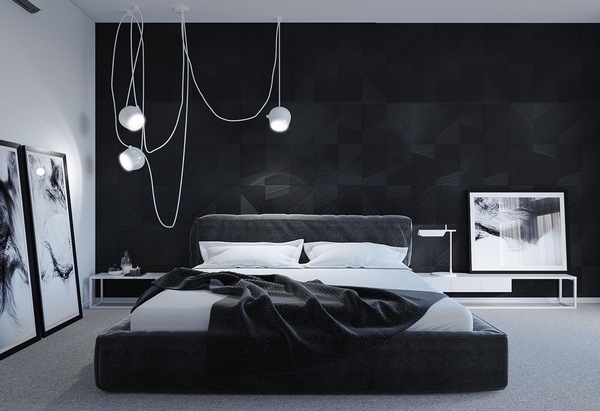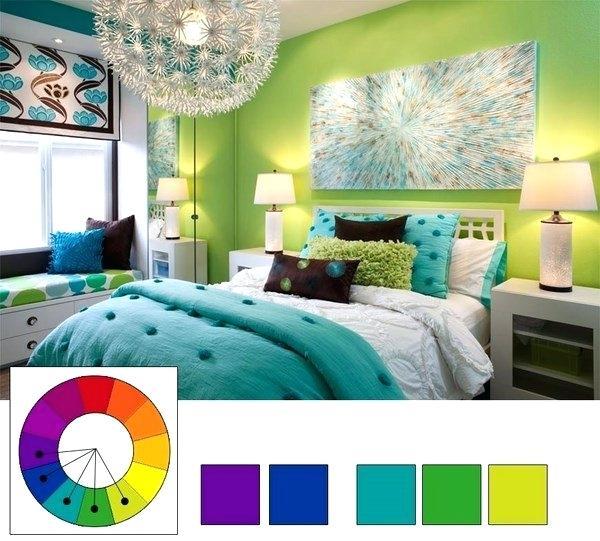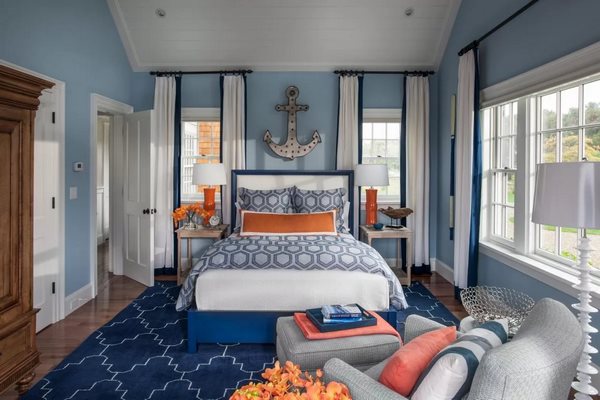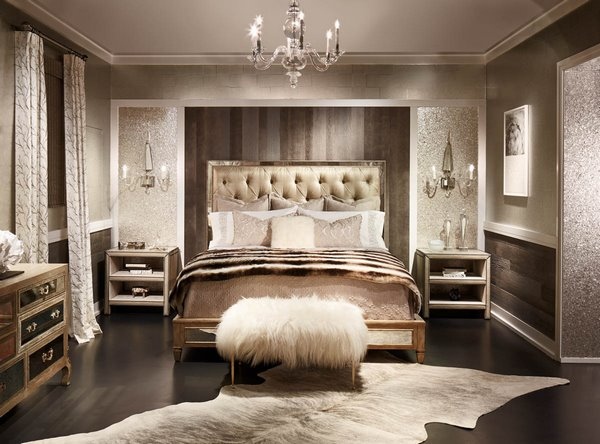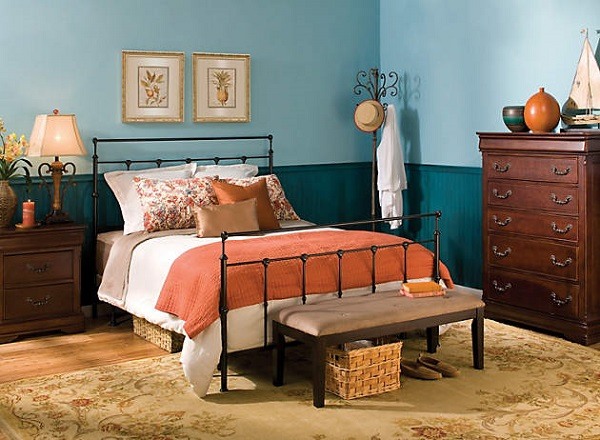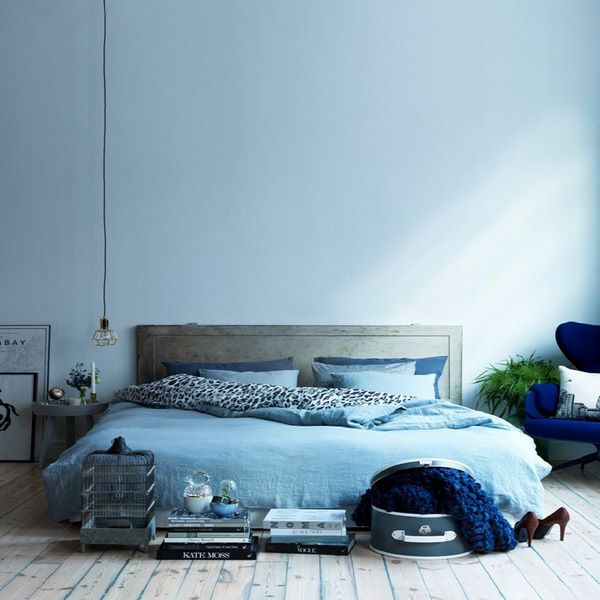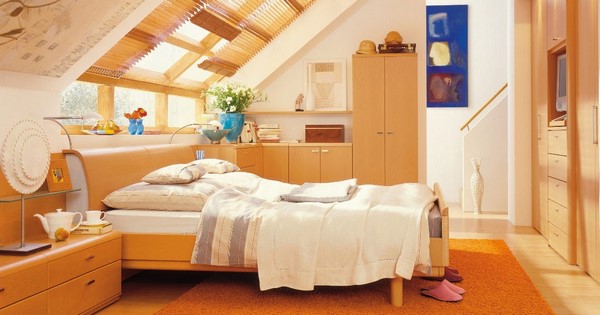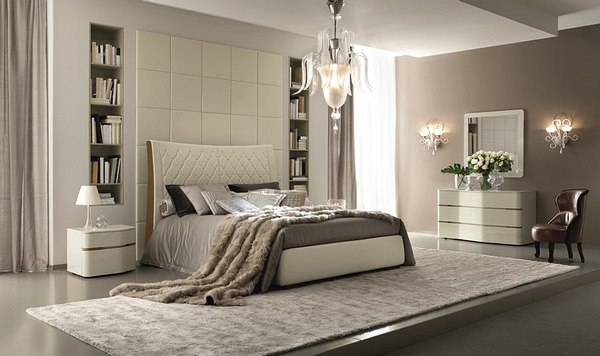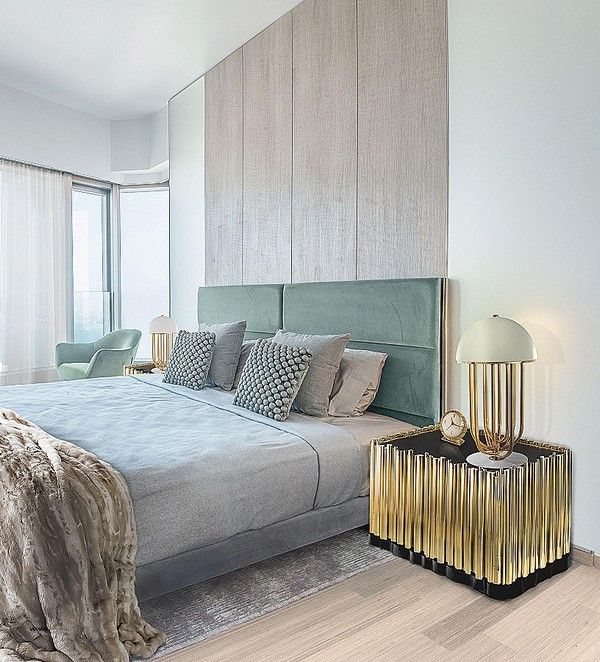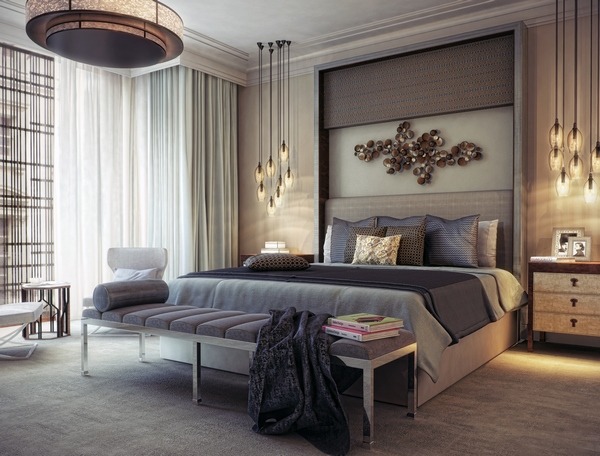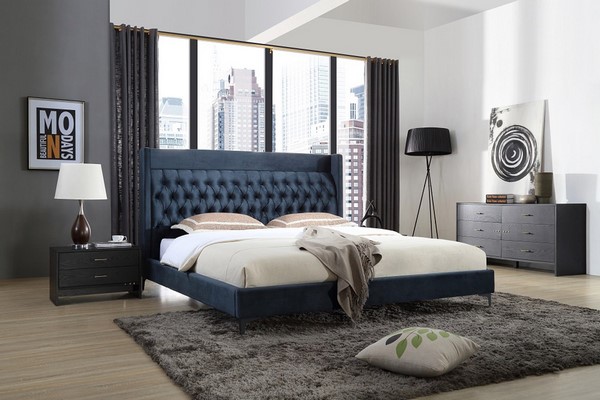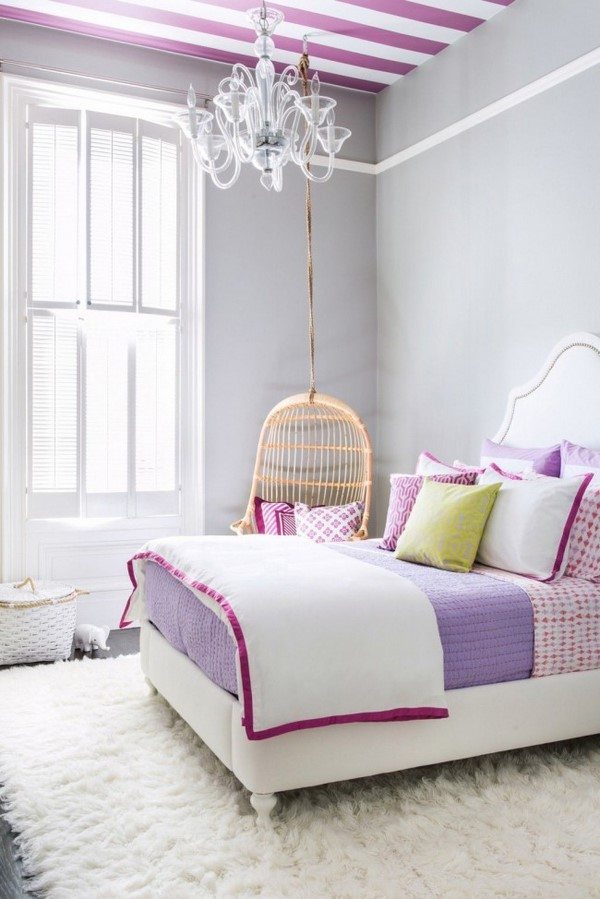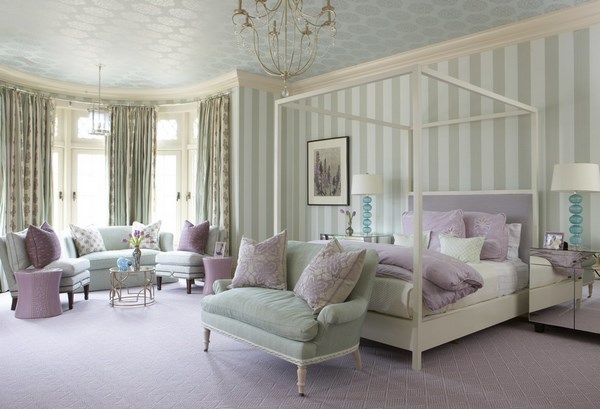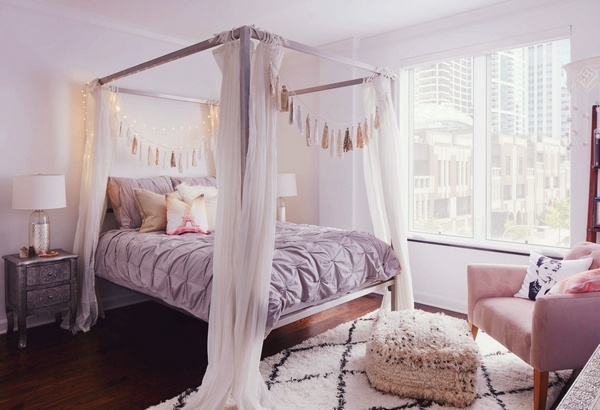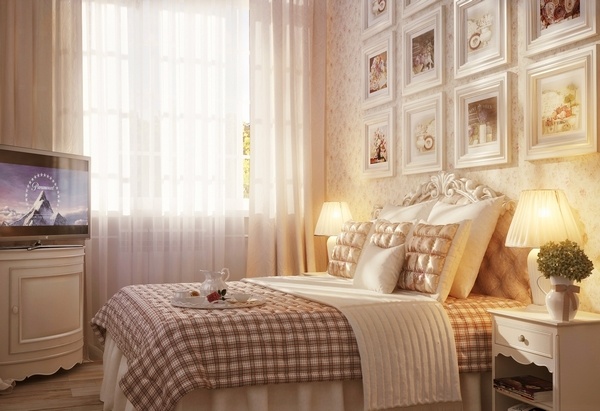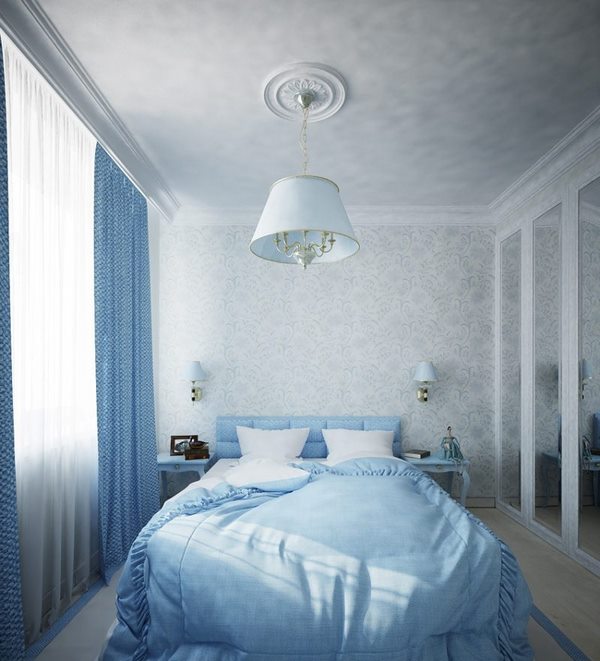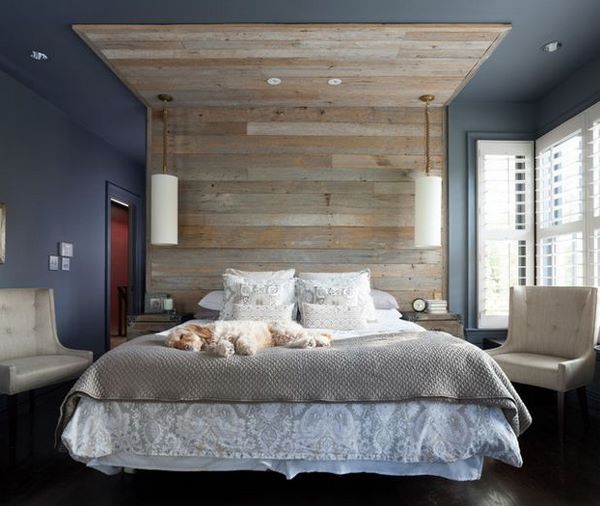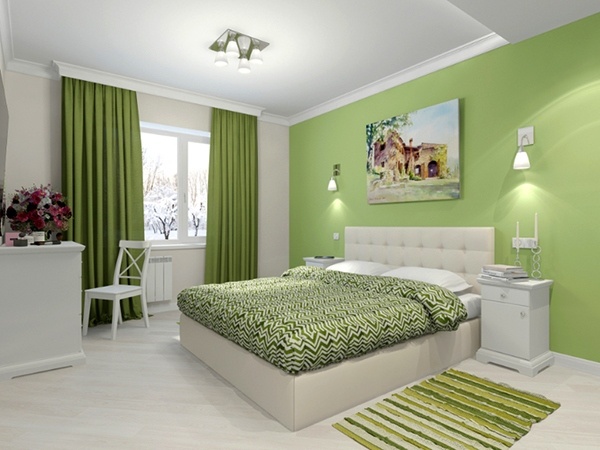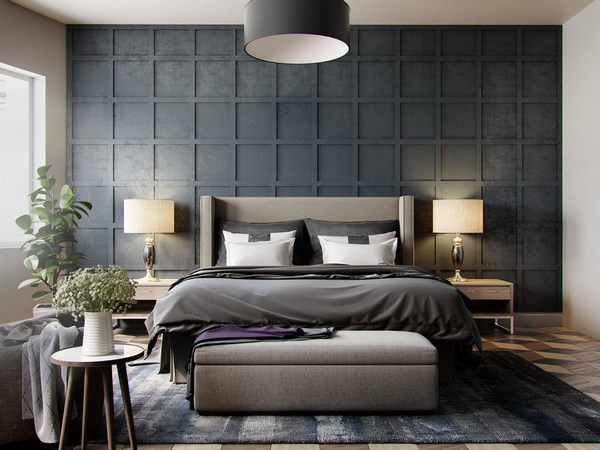The choice of colors for decorating your bedroom is an important task. First of all, you should like the shades and instead of looking at popular trends, it is better to think what color palette brings positive emotions to you. Many people do not realize that the color determines the general atmosphere in the room and that is why positive colors for bedrooms are of such a great importance. You can use only one basic shade or decorate the bedroom in two colors. It is also important that color combinations allow creating a cozy atmosphere. We shall give you some useful ideas how to create a harmonious and cozy interior and turn your bedroom into an ideal recreation area.
The process of designing a bedroom can be quite challenging and you often have to deal with limited space, small dimensions, non-standard shape and even certain architectural flaws. However, if you take into account the proportions and features of the room you can create a beautiful and comfortable space. Bedrooms vary in size, shape, height, lighting, etc. It is essential that you carefully consider the architectural features and overall dimensions of the room. For example, narrow rooms, rooms with very high or low ceilings, attic areas, rooms with niches of various depth, with good or poor natural light, etc. All of these features require a competent design approach and special design techniques, understanding the principles and psychology of colors and their combinations, a thoughtful placement of furniture, careful choice of artificial lighting, skillful organization of the space so that the final result is a cozy bedroom where you can have a good rest and sleep.
Psychologists and professional designers know that a bad choice of colors in the interior affects not only the appearance of the room but the mental and physical health of human beings. Incorrectly chosen color scheme can reduce efficiency or lead to melancholy while positive colors make the bedroom an ideal place for concentration, creativity and recreation.
Positive colors for bedrooms – important considerations to keep in mind
When we talk about positive colors for bedrooms, we have to point out that perception is strictly individual. However, besides the psychology of color in the interior which is analyzed by scientists and psychologists, there are some more very important factors that need to be considered and here are some of them:
One of the first criteria is age. Children like bright colors as they are cheerful and vivid. However, intense bright colors may be harmful and even dangerous for children with weak psyche who are vulnerable and to the influence of the environment. Powerful and energetic colors can have a positive influence on children prone to apathy, while calm tones are recommended for impulsive and expressive personalities. According to psychologists, it is also better to use soothing tones when decorating a teen bedroom. At this age teenagers are full of energy, so the bedroom needs to balance their vivacity. The bedroom of adult persons requires a completely different approach. Typically, adults need a place where they can rest and relax which means that color scemes should feature light shades of yellow and green, beige, neutral or natural colors.
The shape, size, height or, generally speaking, the dimensions of the room should also be considered carefully when choosing the color scheme. You know that strong and bright colors make surfaces appear closer, they can reduce the space visually and even lead to irritation.
Color characteristics like intensity, hues, depth, saturation, brightness are hugely important. Bright colors immediately attract the eye and affect the emotional state while more restrained tones have a calming and soothing effect.
We mentioned personal perception which is another consideration to keep in mind. You may like one color which gives you positive emotions despite the fact that other people find it depressing. You should not forget that the bedroom is a personal space and you can use those colors and their shades that please you. Focus on the simple rules for combining colors and you will have an aesthetically pleasing, comfortable and peaceful bedroom.
Suitable paint for walls and ceiling is just one of the things you need to think about. Walls and ceiling decoration is the base of the bedroom interior. Furniture, textile and accessories are just as important for the overall appearance and atmosphere. You need to select patterns and tones that will blend harmoniously with the main color scheme.
What are the most popular positive colors for bedrooms?
Positive colors for bedrooms will vary for every individual. However, there are some colors and groups of colors that have stood the test of time and have proven their beneficial effect.
Pastel colors – this is a large group of soft, quiet, calm and unobtrusive colors which do not irritate, do not cause anxiety and do not make people nervous or stressed. These are the pale shades of bright and saturated colors and create a peaceful atmosphere, emphasize the depth of the main tone, balance the color contrast and, in general, are ideal for bedroom color schemes. One major advantage of pastel shades is their ability to adapt to any style. They are ideal for shabby-chic, country, eco-style, Mediterranean, French country, Provencal decors, etc. Pastel shades visually increase the space and amount of daylight. This is useful for small bedrooms which face north. In addition, these gentle colors can create an atmosphere of peace, lightness and refinement. All you need to do is to choose the right shade, furniture and decorative objects. Another advantage is that warm and cold shades are easily combined and the result is a soft contrast that does not irritate the eye and is perfect for bedroom.
Natural and neutral colors are universal and have a lot of advantages. They can be warm or cold and while warm colors activate emotions and desire for socialization, cold colors can create a sense of relax. As per color theory, neutral colors are black, white and all combinations in between, that is – gray. You may have noticed, however, that neither black nor white are present as colors on the color wheel.
On the first place, neutral colors are not counted as an extra color when they are included in a color scheme, they are versatile and can be used in any interior style – from rustic to minimalist. Neutral and natural colors will always be popular and at the top of trends in interior design as they are easily combined with each other and naturally balance strong and bright shades. Another advantage of neutral colors is that they allow materials and textures – beautiful fabrics, vases full of flowers or roughly crafted wooden furniture – to stand out. Neutral colors are a time tested classic and have proven that they can reduce the stress from everyday life. The greatest power of neutral colors is the fact that they do not bother and will never tire the eye. Neutral colors can be used liberally without any worries. When you do not need (or do not like) bold color solutions, you can create exceptional designs by combining different tones and nuances – warm or cold – and create a soothing and relaxing atmosphere in the bedroom. Some people think that neutral colors have no character and personality and look boring and tedious. It is true that it is more challenging to create a sense of individuality and style with neutral colors, but it is not impossible, especially if you add layers and textures wisely and competently to add visual interest.
In addition to black, white and gray, a huge range of colors is classified as natural – these are wood colors, earthy tones, all shades of brown, from olive to green, all the pastel shades of yellow, orange, and red and generally speaking, the group includes the numerous shades that are common in Nature. The definition for natural colors can be interpreted in different ways but without any doubt, they create an atmosphere of warmth, softness, coziness and luxury in any bedroom interior. Earth symbolizes stability and earthy tones like beige, sandy shades and light yellow create a relaxing atmosphere which is perfect for rest at the end of the day. These colors have an important role in maintaining good physical and mental health so they are the perfect choice when you are looking for positive colors, suitable for bedrooms.
Understanding the psychology of positive colors for bedrooms
There are three primary colors – red, blue and yellow, there are secondary colors, and each one has its shades, tones and nuances. A certain color can be used to attract attention and to inspire a certain mood, each color has different meanings and people react in a different way because, like everything in Nature, colors have positive and negative meaning. Let’s have a closer look at some of the most popular bedroom interior colors.
Red is a powerful color, it is associated with fire and blood, energy, warmth, strength, power, determination, and passion, desire and love. This is an emotional color giving a feeling of warmth. Red is strong it instantly attracts the eye, stimulates us and raises the pulse rate and at the same time, it can be perceived as demanding and aggressive so you need to use it very carefully in bedrooms when you aim at achieving a soothing and relaxed interior.
Blue is associated with the sky, the freshness of the sea and has a soothing effect. It relieves anxiety, neutralizes aggression and other negative emotions. Light blue shades are ideal for decorating a bedroom.
Yellow is sunny, emotional, optimistic, cheerful, friendly, warm, vivid, it adds warmth to the interior and creates pleasant emotions. Due to the fact that this primary color is exceptionally stimulating and psychologically considered as the strongest color (its brightest shades can be more aggressive than red), when used in bedrooms, it should not be too bright and intense.
Pink, as a shade of the red palette, is dreamy, romantic, tender and feminine. It symbolizes warmth, love and sexuality.
Violet (purple) is the color of power and desire, of deep contemplation and meditation. It is associated with royalty and luxury as well.
Orange is as bright, sunny and optimistic as yellow, it creates a feeling of warmth and is associated with joy, sun and tropics. However, orange is a combination of red and yellow and excessive use of this color in the bedroom may have a negative effect on the nervous system.
Green is associated with nature, prosperity and harmony, tranquility and generosity. This color is often described as the balance between warm and cold colors. It has great healing power and reduces blood pressure, soothes the mind and creates a sense of safety. This is one of the most pleasant and restful colors to the human eye.
Brown is the color of earth and represents security, reliability and stability. It creates a sense of warmth and coziness. Brown is solid and organic and an ideal choice for a positive color.
White is one of the most popular neutral colors and is associated with innocence, modesty, purity, sincerity, spirituality, simplicity. Unlike black, white is usually perceived in a positive way as it means safety. White is the main color in minimalism and those who would like to keep to the essence of the style, should keep that in mind as well. However, in a bedroom interior, white can have a completely different look as some people associate it with hospitals.
Gray is not only one of the trendiest interior colors, but due to its neutrality, it does not irritate the eye, it is calm and quite, elegant and sophisticated, and the perfect background for other colors or interior design elements.
Black is not the first choice of homeowners who are looking for positive colors for bedrooms. It is connected with power, elegance, high quality, reliability and is the best choice if you want to make a statement with a dramatic interior. Black bedrooms look unconventional, bold and glamorous and if this color brings you positive emotions, do not hesitate and go for it!
Positive colors for bedrooms – combinations and schemes
Based on color psychology, you can create different interiors using individual shades or combinations. Colors should be combined correctly so that they blend in a harmonious and balanced way. In a series of articles we have explained the principles of analogous, triadic, complementary and monochromatic color schemes. As you already know, analogous combinations use colors that are next to each other on the color wheel and one tone can be used as a background (or a main color) and the others can play the role of accents.
Complementary color schemes are based on contrasts of two colors opposite each other on the color wheel. This type of combinations should be used with extra caution in bedrooms, especially if you use bright and saturated shades. Remember that you can use cold and warm or contrasting shades safely only when you use pastel tones, for example green, blue or lilac. Using triadic colors also requires a certain knowledge, experience and understanding when you want to create a balanced interior that evokes positive sensations.
You may have heard of “organic combinations” and this is the easiest way to pair colors that complement each other. This is a good start for people who do not have a lot of experience in interior design and decorating. If you focus on one color palette you can combine several different shades that match each other – for example, if the bedroom is decorated in light beige tones, then peach, golden or pink can be used as additional colors and your interior will look cozy and calm and the room will have a pleasant atmosphere, inviting both adults and children to have a rest.
Contrast combinations look very good, but you need to know which shades can be paired and which ones should not. The simplest version of contrasting combination is black with white or with red. As we said earlier, black and white are neutral colors that are absent on the color wheel but it is a time tested combination. The proportion is essential especially when you design a bedroom.
Monochromatic bedroom interiors sound like an easy task as they combine many shades of the same color. However, this concept is deceptively easy and in this case you will have to combine not only the main shades but also the smallest details. Geometric and various abstract patterns are often used in monochromatic interiors to add depth, as well as a variety of fabrics which add texture and individuality to the interior.
Natural (and artificial) light is very important for the interior design of any room of the home and when we talk about positive colors for bedrooms, it is even more important. It is true that the choice of color scheme depends on the personal taste and perception, age and gender, yet you should always take into account the amount of light as it affects the appearance of colors, hence the overall atmosphere in the room.


